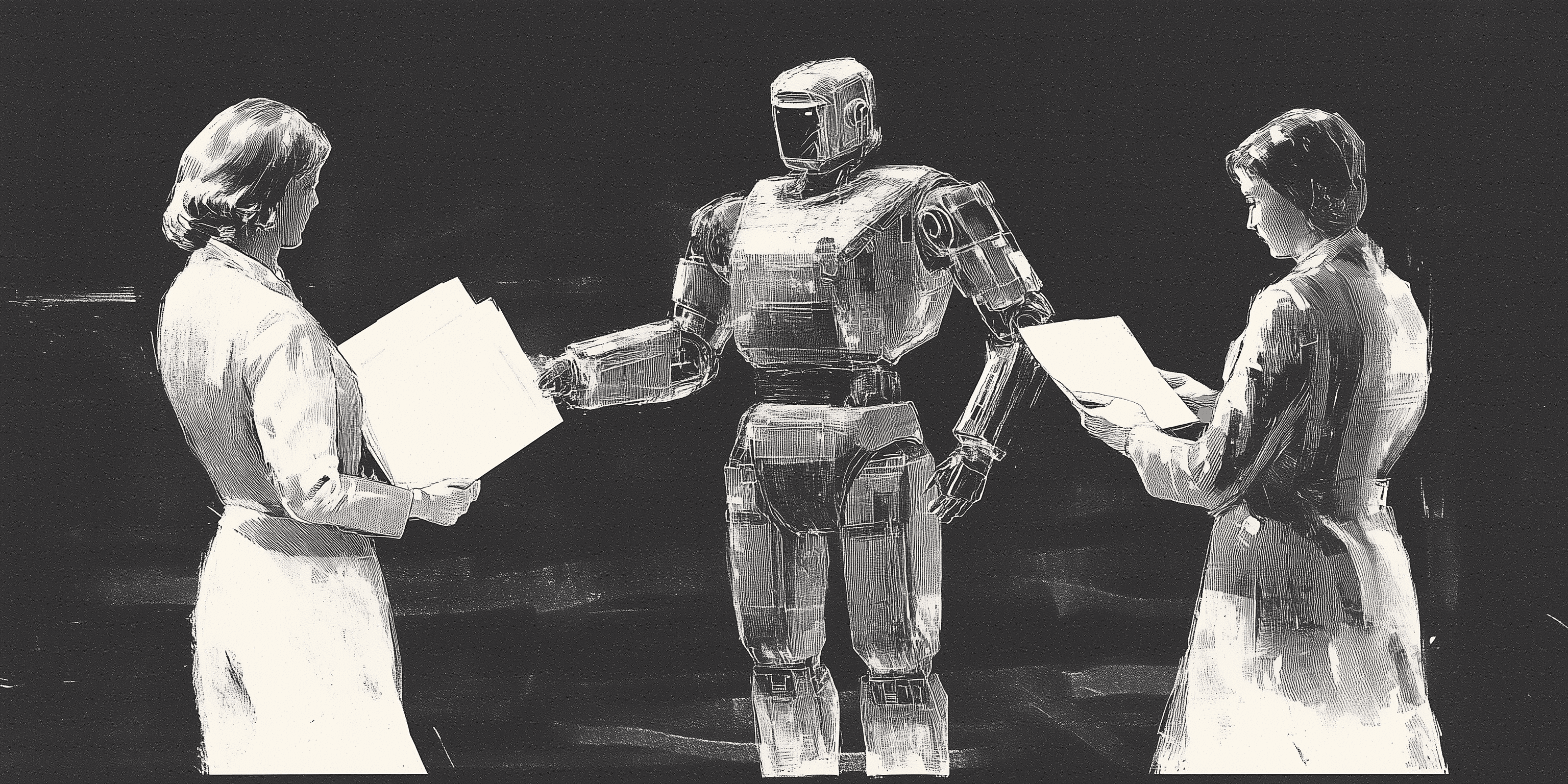Ghiblification
The loss of uniqueness and cultural value in renowned art styles due to widespread reproduction by generative AI tools.
Creativity
·
Samuel Salzer
Creativity
·
Samuel Salzer



Ghiblification
Definition
n. The phenomenon where previously unique, culturally cherished, or artisanal art styles—such as the distinctive visual aesthetic of Studio Ghibli films—become diluted or lose their perceived value due to widespread reproduction by AI tools. As sophisticated AI image-generation technology becomes accessible, even highly detailed and previously labor-intensive art forms become trivialized, significantly altering how audiences perceive their authenticity and worth.
This effect diminishes the rarity and reverence associated with iconic styles, sparking contentious debates around artistic integrity, intellectual property, and creative ethics in the AI age. Audiences accustomed to seeing meticulously handcrafted animation, like those in Studio Ghibli's beloved films, may increasingly encounter AI-generated approximations, shifting public expectations of artistry and craftsmanship.
Ghiblification doesn’t merely replicate; it diminishes. Once revered styles become ubiquitous and disposable, stripped of their artistic gravitas, leading observers to reflexively doubt the authenticity, effort, and intentionality behind creations—no matter how skillful or sincere.
Origins
Coined following the explosion of Studio Ghibli-inspired images generated by OpenAI's GPT-4o image model in early 2025, using prompts like "Studio Ghibli style" or "make this look like a Ghibli film". The phenomenon gained further attention after a viral resurgence of Studio Ghibli co-founder Hayao Miyazaki’s vehement critique of AI-generated art. In a widely-circulated video, Miyazaki famously dismissed AI animation as "an insult to life itself," condemning the technology's inability to genuinely understand human pain, empathy, and the nuanced movements conveying authentic human experience.
Further highlighting this critique was the resurfaced example from "The Wind Rises," where one animator, Eiji Yamamori, spent 15 months meticulously creating a 4-second crowd scene. Miyazaki affirmed this painstaking effort as "worth it," illustrating the sharp contrast between the profound human investment in handcrafted animation and the effortless generation of AI approximations. This tension between AI-driven popularity of the Ghibli aesthetic and Miyazaki’s ethical rejection of algorithmic imitation underscores a deeper cultural debate about the intrinsic value of human artistry versus mechanical reproduction.
Definition
n. The phenomenon where previously unique, culturally cherished, or artisanal art styles—such as the distinctive visual aesthetic of Studio Ghibli films—become diluted or lose their perceived value due to widespread reproduction by AI tools. As sophisticated AI image-generation technology becomes accessible, even highly detailed and previously labor-intensive art forms become trivialized, significantly altering how audiences perceive their authenticity and worth.
This effect diminishes the rarity and reverence associated with iconic styles, sparking contentious debates around artistic integrity, intellectual property, and creative ethics in the AI age. Audiences accustomed to seeing meticulously handcrafted animation, like those in Studio Ghibli's beloved films, may increasingly encounter AI-generated approximations, shifting public expectations of artistry and craftsmanship.
Ghiblification doesn’t merely replicate; it diminishes. Once revered styles become ubiquitous and disposable, stripped of their artistic gravitas, leading observers to reflexively doubt the authenticity, effort, and intentionality behind creations—no matter how skillful or sincere.
Origins
Coined following the explosion of Studio Ghibli-inspired images generated by OpenAI's GPT-4o image model in early 2025, using prompts like "Studio Ghibli style" or "make this look like a Ghibli film". The phenomenon gained further attention after a viral resurgence of Studio Ghibli co-founder Hayao Miyazaki’s vehement critique of AI-generated art. In a widely-circulated video, Miyazaki famously dismissed AI animation as "an insult to life itself," condemning the technology's inability to genuinely understand human pain, empathy, and the nuanced movements conveying authentic human experience.
Further highlighting this critique was the resurfaced example from "The Wind Rises," where one animator, Eiji Yamamori, spent 15 months meticulously creating a 4-second crowd scene. Miyazaki affirmed this painstaking effort as "worth it," illustrating the sharp contrast between the profound human investment in handcrafted animation and the effortless generation of AI approximations. This tension between AI-driven popularity of the Ghibli aesthetic and Miyazaki’s ethical rejection of algorithmic imitation underscores a deeper cultural debate about the intrinsic value of human artistry versus mechanical reproduction.
Definition
n. The phenomenon where previously unique, culturally cherished, or artisanal art styles—such as the distinctive visual aesthetic of Studio Ghibli films—become diluted or lose their perceived value due to widespread reproduction by AI tools. As sophisticated AI image-generation technology becomes accessible, even highly detailed and previously labor-intensive art forms become trivialized, significantly altering how audiences perceive their authenticity and worth.
This effect diminishes the rarity and reverence associated with iconic styles, sparking contentious debates around artistic integrity, intellectual property, and creative ethics in the AI age. Audiences accustomed to seeing meticulously handcrafted animation, like those in Studio Ghibli's beloved films, may increasingly encounter AI-generated approximations, shifting public expectations of artistry and craftsmanship.
Ghiblification doesn’t merely replicate; it diminishes. Once revered styles become ubiquitous and disposable, stripped of their artistic gravitas, leading observers to reflexively doubt the authenticity, effort, and intentionality behind creations—no matter how skillful or sincere.
Origins
Coined following the explosion of Studio Ghibli-inspired images generated by OpenAI's GPT-4o image model in early 2025, using prompts like "Studio Ghibli style" or "make this look like a Ghibli film". The phenomenon gained further attention after a viral resurgence of Studio Ghibli co-founder Hayao Miyazaki’s vehement critique of AI-generated art. In a widely-circulated video, Miyazaki famously dismissed AI animation as "an insult to life itself," condemning the technology's inability to genuinely understand human pain, empathy, and the nuanced movements conveying authentic human experience.
Further highlighting this critique was the resurfaced example from "The Wind Rises," where one animator, Eiji Yamamori, spent 15 months meticulously creating a 4-second crowd scene. Miyazaki affirmed this painstaking effort as "worth it," illustrating the sharp contrast between the profound human investment in handcrafted animation and the effortless generation of AI approximations. This tension between AI-driven popularity of the Ghibli aesthetic and Miyazaki’s ethical rejection of algorithmic imitation underscores a deeper cultural debate about the intrinsic value of human artistry versus mechanical reproduction.


